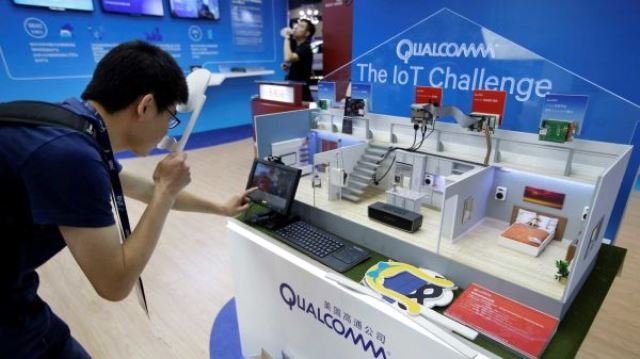Qualcomm’s share of China’s smartphone chip market decreased in 2020 due to U.S. sanctions on phone maker Huawei.

As a result, the country’s domestic mobile players turned to alternatives such as Taiwan’s MediaTek, according to CINNO Research report. The report did not reveal the chip share of MediaTek in China in 2020.
Last year, 307 million smartphone system on chips (SOC) were shipped in China, down 20.8 percent year-on-year, the report said.
Qualcomm’s shipments in China shrank 48.1 percent, CINNO Research said without releasing details on the number of Qualcomm chips shipped. The U.S. giant’s market share in China fell to 25.4 percent in 2020 versus 37.9 percent in 2019.
Part of the reason for Qualcomm’s declining market share is due to U.S. sanctions on Huawei, the leading smartphone supplier.
Huawei was put on a U.S. blacklist known as the Entity List in 2019, which restricted American firms — including Qualcomm — from exporting certain components to Huawei. Huawei used some Qualcomm chips in its devices.
At the time, Qualcomm said the export restrictions had hurt its business.
The U.S. chipmaker’s market share in China began to decline through 2020, as Huawei decided to ramp up its focus on its own chip division called HiSilicon. Huawei’s high-end devices use the company’s Kirin chips, designed by Huawei and manufactured by Taiwan’s TSMC.
The shift helped HiSilicon become the number one smartphone chip player in China in the first half of 2020.
Huawei’s SOC market share dropped from 37 percent in the first half of 2020 to 27.2 percent in the second half of the year.
Taiwan’s MediaTek benefited from all that pent-up demand. MediaTek took advantage of Huawei and Qualcomm’s woes, and also got major Chinese smartphone makers to use its chips.
China-based smartphone vendors such as OPPO, Vivo, Xiaomi and Huawei increased their share on the MediaTek platform, CNBC reported.
Huawei is China’s largest smartphone maker by market share, followed by Vivo, Oppo and Xiaomi.
The U.S. sanctions on Huawei have forced other Chinese players to look for alternatives should they find themselves cut off from the likes of Qualcomm.
“This is not only because of the excellent performance of MediaTek’s mid-end platform, but also, it is undeniable that the U.S. has imposed a series of sanctions on Huawei & Hisilicon, forcing manufacturers to seek more diversified, stable and reliable sources of supply,” CINNO Research said in a press release.
China is the world’s largest market for 5G smartphones.
“After the first year of 5G, let’s take a view of the changes in China’s smartphone chipset market. It shows that the market pattern has changed from a single dominant Qualcomm company in the 4G era, to a three-party pattern of Hisilicon, Qualcomm and MediaTek in 2020,” CINNO Research said.
Last year, US-based Qualcomm launched new 5G smartphones chips known as the 6 series and 4 series, which could eat into MediaTek’s market share in China, said Neil Shah, a partner at Counterpoint Research.
